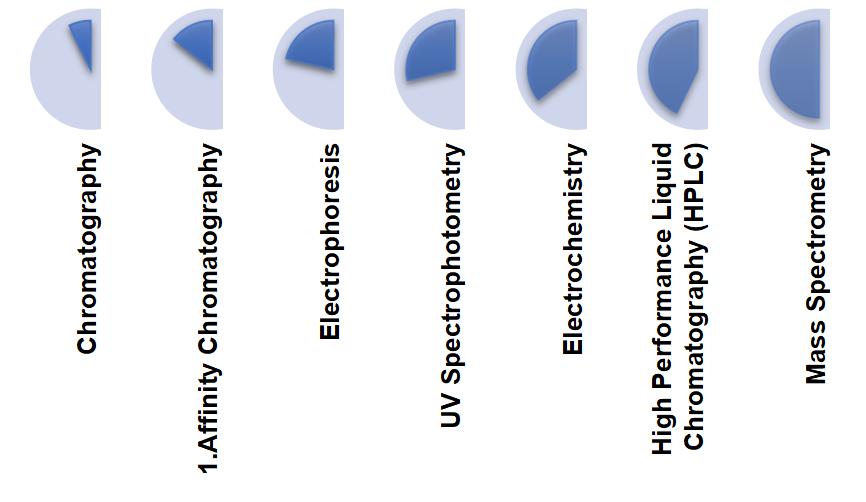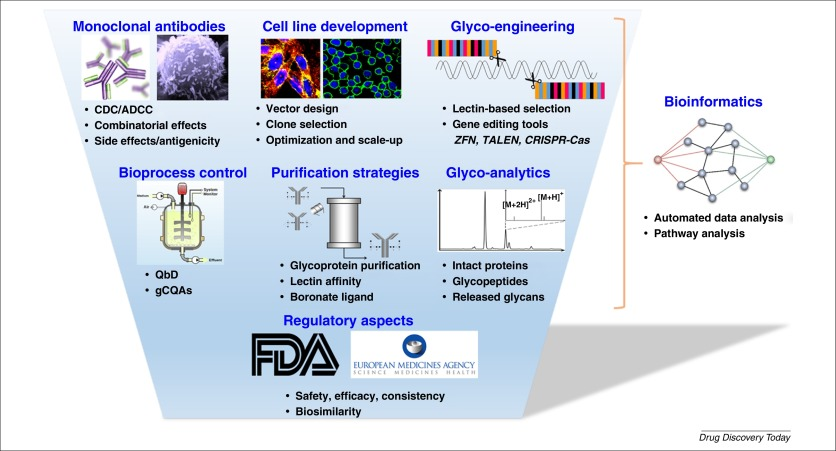Understanding protein function and mechanism of action as well as developing new theories and methods for researching diseases and treatments all depend on the examination of protein glycosylation.To satisfy the requirements of the ICH Q6B guidlines for the thorough characterisation of the glycosylation of glycoproteins, Creative Proteomics offers protein glycosylation analysis services.
What is Protein Glycan?
A post-translational modification known as protein glycosylation entails the covalent bonding of sugars or glycans to the amino acid residues of a target protein. The very complicated and tightly controlled glycosylation process is essential for many biological processes, including protein folding and stability, intercellular communication, cell signaling, immunological responses, and disease states. N-linked and O-linked protein glycosylation are the two main forms.
1. N-linked glycosylation: attachment of a sugar group to an asparagine residue of a protein via an amide bond. The process takes place at the luminal surface of the endoplasmic reticulum, requires oligosaccharide chains as glycosyl donors, and is catalyzed by glycosyltransferases.
2. O-linked glycosylation: the glycan is attached to the oxygen atom of the side chain of a serine or threonine residue. The process is accomplished in the Golgi apparatus and endoplasmic reticulum and requires the catalysis of glycosyltransferases.
 Fig 1. Major types of glycosylation in humans. (Reily, C., et al.; 2019)
Fig 1. Major types of glycosylation in humans. (Reily, C., et al.; 2019)
Many biomolecules, including proteins and nucleic acids, are modified by glycosylation, which is a frequent method of protein modification. Glycoproteins can have a variety of structural and biological properties depending on where and how they are glycosylated. In procedures like cell communication and cell recognition, certain glycoproteins can function as cell surface receptors. Additionally, glycosylation can have an impact on the localization and distribution of proteins inside the cell as well as their folding and stability.
Protein Glycan Analysis Methodology

Developments and Challenges of Protein Glycan Analysis
The biotechnology of recombinant drug production is a complex process that involves multiple steps from structure-function studies of drug molecules, cell line development, upstream and downstream processes, analytics and informatics, to regulatory approval and marketing. Each step of the process presents significant challenges and opportunities for glycosylation analysis and control.
 Fig 2. Developments and challenges of glycosylation analysis and control in bioprocessing. (Zhang, P., et al.; 2016)
Fig 2. Developments and challenges of glycosylation analysis and control in bioprocessing. (Zhang, P., et al.; 2016)
Therefore, bioprocesses for recombinant drug production require a series of measures, including the selection of appropriate cell lines, optimization of upstream and downstream processes, and enhanced analytical and informatics studies, to ensure the correctness and consistency of glycosylation modifications. Strict regulatory approval and marketing management are also required to ensure drug safety and efficacy.
What We Provide?
N-linked glycosylation services offered by Creative Proteomics include protein glycosylation identification, site analysis, and bioinformatics analysis of glycosylation modifications. These services can give clients a better understanding of how proteins are modified through glycosylation and, in turn, offer solid support for related research.
Creative Proteomics is a professional proteomics research company dedicated to resolving the structure-function relationship of proteins. In order to further support our clients' research work, we provide not only N-linked glycosylation service, but also O-linked glycosylation service.
With its cutting-edge technology and vast experience, Creative Proteomics' Glycosylation Site Occupancy Analysis service gives customers accurate and dependable findings. Identification of protein glycosylation sites, site occupancy analysis, and bioinformatics analysis of glycosylation changes are all included in the service.
Protein glycosylation results in the creation of glycopeptides, which are composed of a sugar chain connected to a particular protein's amino acid residue. Creative Proteomics' Glycopeptide Analysis service utilizes its advanced technology and extensive experience to provide clients with accurate and reliable results.
Our Goals
With an experienced R&D and operations staff in the area of protein drug characterization, Creative Proteomics is able to offer our customers comprehensive service protein characterization. If you are interested in the services we offer, please contact us. We will give you an official quote as soon as possible.
References
- Reily, C., et al.; Glycosylation in health and disease. Nature Reviews Nephrology. 2019.
- Zhang, P., et al.; Challenges of glycosylation analysis and control: an integrated approach to producing optimal and consistent therapeutic drugs. Drug Discovery Today. 2016, 21(5), 740–765.
Related Sections
Services
Applications
For research use only, not intended for any clinical use.


 Fig 1. Major types of glycosylation in humans. (Reily, C., et al.; 2019)
Fig 1. Major types of glycosylation in humans. (Reily, C., et al.; 2019)
 Fig 2. Developments and challenges of glycosylation analysis and control in bioprocessing. (Zhang, P., et al.; 2016)
Fig 2. Developments and challenges of glycosylation analysis and control in bioprocessing. (Zhang, P., et al.; 2016)



